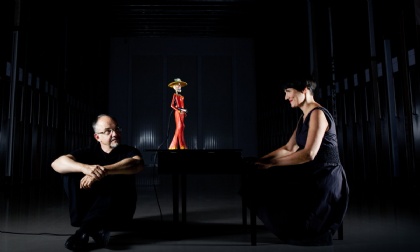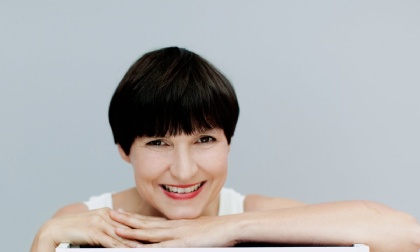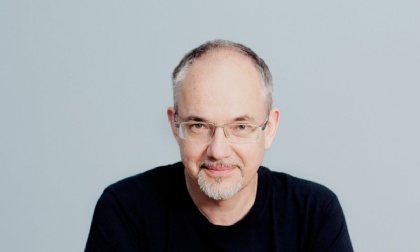 |
| CL3 1CD 15022 |
 |
| This article is currently only available for download. |
|
 |
Whatever Shall Be (Music for Toy Instruments and Electronics) |
| 01 |
|
Kalimba, for toy piano and playback (2005) |
05:16 |
 |
|
|
 |
|
|
|
| 02 |
|
Sequitur XIV, for kalimba and live electronics (2009) |
11:50 |
 |
|
|
 |
|
|
|
| 03 |
|
WebernSpielWerk, for toy piano and ring modulator (2005/12) |
06:04 |
 |
|
|
 |
|
|
|
| 04 |
|
Pandora's Revelation, for music box and live electronics |
07:04 |
 |
|
|
 |
|
|
|
| 05 |
|
Sequitur V, for toy piano and live electronics (2008) |
08:02 |
 |
|
|
 |
|
|
|
| 06 |
|
Listen Thing, palindromic christmas canon for toy piano (2008) |
03:00 |
 |
|
|
 |
|
|
|
| 07 |
|
Whatever shall be, for toy piano, gadgets and live electronics (2010) |
12:19 |
 |
|
|
 |
|
|
|
| 08 |
|
under wood, for amplified and prepared toy pianos and chamber ensemble (2012) |
10:48 |
 |
|
|
 |
|
|
|
| 09 |
|
Trois Cent Drones, for toy piano and live electronics (2012) |
03:33 |
 |
|
|
 |
|
|
|
 |
|
|
|
|
|
|
|
 mp3 320 kB/s mp3 320 kB/s |
 HD wav HD wav |
|
 |
|
|
Whatever Shall Be (Music for Toy Instruments and Electronics) |
|
7,99 € | download |
|
 |
|
 |
| 10th Anniversary Extended Edition |
|
 |
|
| The first thing you notice about the toy piano is its particular and unusual sound. It also looks rather strange when adults play it. Originally designed and manufactured as a toy for children, it wasn’t considered by musicians or composers for almost a century, until John Cage composed the piece “Suite for Toy Piano” in 1948. This was the turning point for the instrument, and since then it seems impossible to imagine new and contemporary music without it. In 2013, pianist Isabel Ettenauer and composer Karlheinz Essl collaborated on a special project. The result is the album “Whatever Shall Be – Music for Toy Instruments and Electronics”, on which the virtuoso Ettenauer performs pieces on the toy piano, kalimba, and jukebox that Essl composed especially for her. He also added electronics to some of the pieces. On the 10th anniversary of this release, we proudly present the digital version of the album, which includes two previously unreleased pieces, namely “Underwood”, created in collaboration with Ensemble Reconsil (conducted by Antanina Kalechyts), and “Trois Cent Drones”. This album also includes the original versions of “WebernSpielWerk” and “Listen Thing”, two tracks recently released on the album ORGANO/LOGICS by Karlheinz Essl and Wolfgang Kogert. |
 |
| Isabel Ettenauer |
|
 |
|
| Isabel Ettenauer (born 1972) is an Austrian pianist and toy piano virtuoso. After studying piano in Vienna, Switzerland and London she dedicated herself to the music of our time, and is now a champion of living composers. Press reviews have called her “outstanding”, “unusual”, “spectacular” and “impressive”. Ettenauer is a regular guest at international festivals and concert halls. Career highlights have included performances at the Wigmore Hall (London), the Philharmonie Luxembourg (Toy Piano World Summit), the Avignon Festival, the Opéra de Lille, the Ravello Festival, the Uovo Performing Arts Festival (Milan), the International Gaudeamus Music Week (Amsterdam), the Vienna Konzerthaus, the festival Linz09, the Making New Waves Festival (Budapest), plus tours to the US and Taiwan. Composers from all over the world have written more than 40 new works especially for Isabel, including Henry Brant, Karlheinz Essl, Stephen Montague, Joe Cutler, Errollyn Wallen, Otto Lechner, Max Nagl, Bertl Mütter, Vanessa Lann, Tomi Räisänen, Matthew Hindson, Manuela Kerer and Manuel de Roo, to name but a few. In June 2006 her debut album THE JOY OF TOY, with nine especially commissioned compositions, was awarded the “Pasticciopreis” by Austrian state broadcaster Österreich 1. Isabel Ettenauer has also collaborated with artists as diverse as circus artist Jérôme Thomas, mime Markus Schmid, accordionist Otto Lechner, actress Anne Bennent, harpsichordist Goska Isphording, accordionist Guy Klucevsek and stage director Richard Brunel. |
 |
| Karlheinz Essl |
|
 |
|
Karlheinz Essl (born 1960) is an Austrian composer, performer, improviser, media artist and composition teacher. He studied composition in Vienna with Friedrich Cerha and completed his studies in musicology with a doctoral thesis on Anton Webern. As a double bassist, he played in chamber ensembles and experimental jazz bands. Essl was composer-in-residence at the Darmstadt Summer School (1990 – 94) and at IRCAM in Paris (1991 – 93). Between 1995 – 2006 he taught Algorithmic Composition at the Bruckner University in Linz. Since 2007, he has been professor of composition and electro-acoustic music at the University of Music and Performing Arts in Vienna. His work with computers and a long-term preoccupation with the poetics of serial music have been formative influences on his compositional thinking. During the 1990s he carried out various projects for the Internet and became increasingly involved with improvisation. In 1997, Karlheinz Essl was a featured composer at the Salzburg Festival. His compositions are now played all over the world.
In addition to writing instrumental music, Karlheinz Essl also works in the areas of electronic music, interactive real-time compositions, and sound installations. He develops software environments for algorithmic composition and live electronics. As a performer and improviser, he uses self-developed computer software and instruments such as electric guitar, toy piano, and modular synthesizers. |
|
 |
|
|


